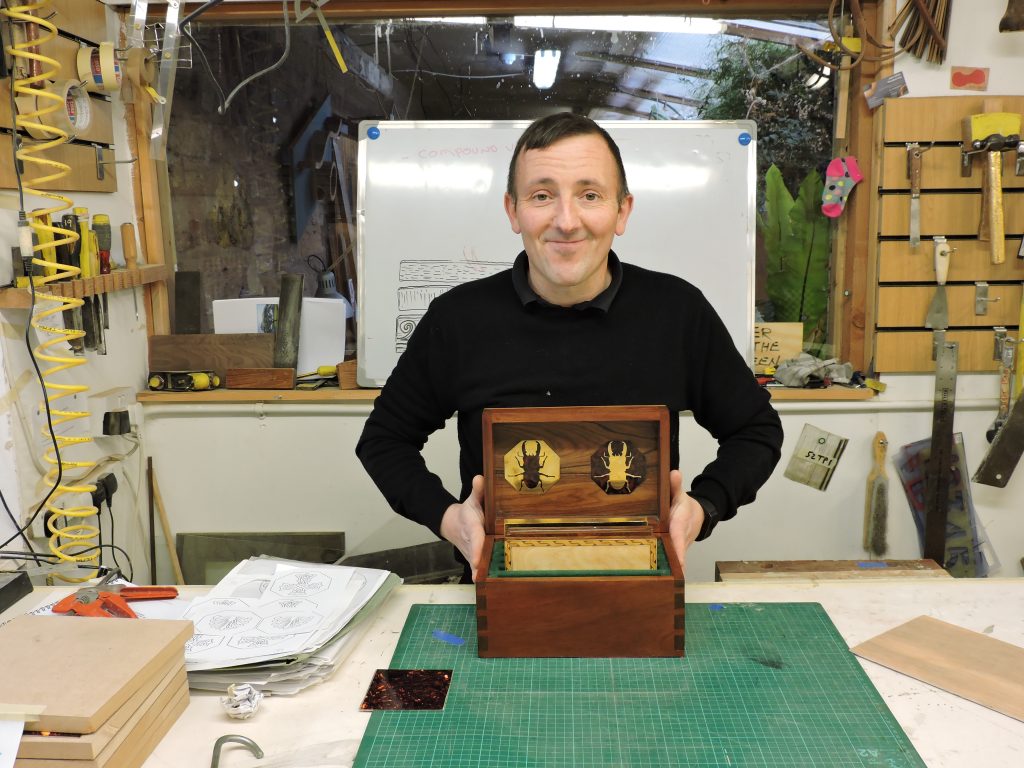Our professional students have returned from their half-term break and this week are embarked on learning a centuries-old decorative technique.
Once upon a time boulle work involved veneering tortoiseshell onto wood to create luxurious embellishments.
It’s a process that was perfected by the French cabinetmaker André Charles Boulle in the 17th century, and came to represent the wealth and extravagance of the court of Louis XIV, the Sun King.
Despite the term tortoiseshell, the shell actually came from the hawksbill turtle, found in tropical seas, and which is now critically endangered.
Selling turtle shell has been banned since the 1990s and buying turtle shells is now illegal in most countries.
But the process itself, intricately veneering furniture with a marquetry of tortoiseshell and brass, is a skill that our professional students must learn, because it’s a decorative flourish that still has a place in modern woodworking.
Nowadays, of course, rather than tortoiseshell we use a plastic substitute, which is adhered to brass using a contact spray adhesive.
A decorative shape is then fixed to the tortoiseshell and carefully cut using a jeweller’s blade, then soaked in a solution of white spirit which dissolves the glue, and reveals the decoration.
It’s a technique that’s being taught this week by our resident expert, Graham Davies, pictured here with tortoiseshell veneers.
